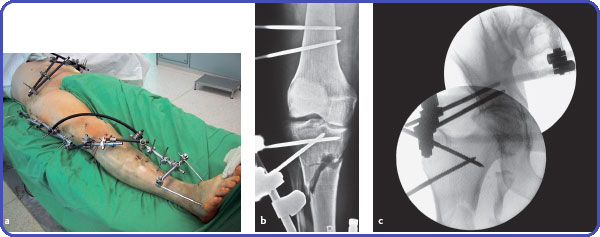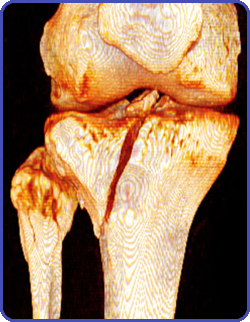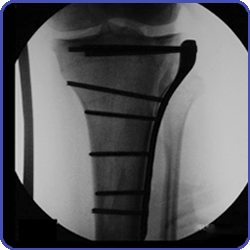COMPLEX FRACTURES

Fractures involving the knee joint quite often disrupt the articular cartilage which otherwise contributes to a smooth, low friction interface on which bones glide.
The skill lies in restoring this surface near to its original condition to prevent the development of arthritis in future. Arthritis results in a permanently painful knee with restriction of motion.
Achieving this by minimally invasive techniques requires a good understanding of the mechanics of disruption, its effect on bone fragment position and experience in utilising.

THE ARTHROSCOPE
SMALL INCISIONS NOT INVOLVING THE KNEE JOINT.
- Arthroscopic Surgery has enabled significant advances in treating some of these fractures. One can see the entire joint on a large screen, accurately restore the joint and percutaneously (small incisions on the skin) fix such fractures under X Ray control.
- Special plates have been designed which can be used with very small incisions thus achieving good fixation with minimum disruption of tissues.
- The advantages of such refined techniques and instrumentation lie in restoring early movement and strength of the knee and thereby faster recovery times.
- Until a few years ago articular cartilage damaged due to an injury could not be restored. If the area damaged was reasonably large, it caused a persistent dull ache – the knee would not feel normal. Articular cartilage restoration techniques have brought a lot of promise in treating such damaged areas.



